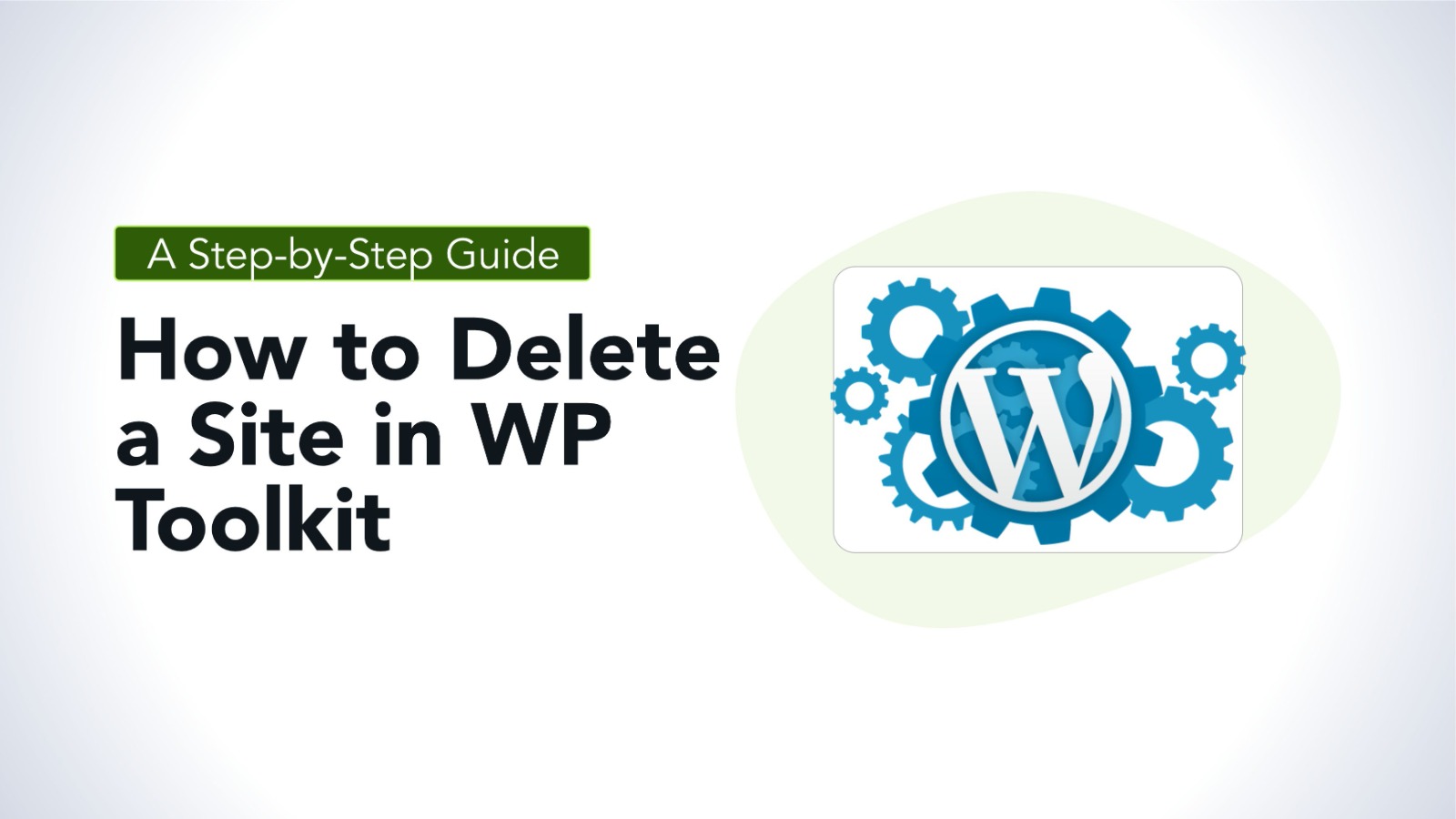
WP Toolkit is a powerful management interface designed for WordPress sites, offering various tools for installation, updates, security, and backups. Whether you are a website owner, developer, or hosting provider, WP Toolkit simplifies WordPress management tasks. However, there may come a time when you need to delete a WordPress site, either to free up resources, remove outdated or redundant content, or simply to clean up your hosting environment. This guide provides an extended walkthrough on how to delete a site using WP Toolkit, ensuring that you do so safely and efficiently.
Understanding WP Toolkit
WP Toolkit is a comprehensive management tool for WordPress, often integrated into hosting control panels like cPanel or Plesk. It allows users to manage multiple WordPress installations from a single interface, including:
– Installing and configuring WordPress sites.
– Managing plugins and themes.
– Enhancing site security.
– Performing backups and restorations.
– Cloning and syncing sites.
One of the features of WP Toolkit is the ability to delete a WordPress site. Before proceeding with deletion, it’s important to understand the implications and ensure that you no longer need the data or that you have a backup in case of future requirements.
Why You Might Need to Delete a WordPress Site
– Freeing Up Server Space: Deleting unused or outdated sites can free up valuable server resources, including storage space and database capacity.
– Security Concerns: If a WordPress site is compromised or no longer maintained, deleting it can prevent potential security vulnerabilities.
– Removing Redundant Content: If you have duplicate sites or have moved a site to a different domain or server, deleting the old site can help keep your hosting environment organized.
– End of Project: If a website was created for a specific project that has now concluded, it may be time to delete the site.
Pre-Deletion Checklist
Before deleting a WordPress site using WP Toolkit, consider the following steps:
1. Backup Your Site: Always perform a full backup of your WordPress site, including files and the database. This ensures that you can restore the site if needed.
2. Review Site Data: Double-check that you no longer need the site’s data, content, or any associated user information.
3. Inform Stakeholders: If the site is used by others, inform them of your intention to delete the site and ensure that it is no longer required.
4. Check for Dependencies: Make sure that the site isn’t linked to any other sites or services that might be affected by its deletion.
Step-by-Step Guide to Deleting a Site in WP Toolkit
Step 1: Access WP Toolkit
1. Log in to Your Hosting Control Panel:
Ifyou are using cPanel, Plesk, or any other hosting control panel that supports WP Toolkit, log in with your credentials.
2. Navigate to WP Toolkit:
Look for the “WP Toolkit” or “WordPress Toolkit” icon or menu item within the control panel. Click on it to open the WP Toolkit interface.
Step 2: Locate the WordPress Site
1. View Your Sites:
In the WP Toolkit interface, you will see a list of all WordPress sites installed on your server. Each site will be listed along with its domain, status, and various management options.
2. Select the Site to Delete:
Find the site you want to delete from the list. Click on the site name or use the checkbox next to it to select it.
Step 3: Initiate the Deletion Process
1. Open Site Management Options:
Once the site is selected, you will see several options for managing the site, such as updating, securing, or backing up. Look for the “Delete” option.
2. Click on Delete:
Click on the “Delete” button or option to begin the deletion process.
Step 4: Confirm Deletion
1. Review Deletion Details:
A confirmation window or prompt will appear, detailing what will be deleted. This typically includes:
– WordPress files.
– The associated database.
– Any configurations related to the site.
2. Confirm Your Decision:
Confirm that you want to delete the site by clicking “Yes,” “Delete,” or a similar confirmation button. Some interfaces may ask you to type a confirmation phrase or re-enter your password for security purposes.
Step 5: Monitor the Deletion Process
1. Deletion in Progress:
The deletion process will begin, and WP Toolkit will start removing the site’s files, database, and configurations. Depending on the size of the site, this process might take a few seconds to a few minutes.
2. Completion Notification:
Once the site is successfully deleted, WP Toolkit will notify you that the process is complete. The site will no longer appear in your WP Toolkit site list.
Post-Deletion Considerations
1. Verify Deletion
– Check Site Removal: Confirm that the site is no longer accessible by visiting its URL. You should see a 404 error or a page indicating that the site cannot be found.
Check WP Toolkit:
Ensure that the site no longer appears in the WP Toolkit list of sites. If it does, it may indicate that the deletion process was incomplete, and you may need to retry or manually remove any remaining files or database entries.
2. Clean Up Residual Files
File Manager: Use your hosting control panel’s File Manager to navigate to the directory where the site was located. Ensure that all files and folders related to the site have been removed.
Database Cleanup: Check your database management tool (like phpMyAdmin) to verify that the database associated with the deleted site has also been removed.
3. Update Any External Links or References
Broken Links: If the deleted site was linked to from other websites, blogs, or social media profiles, make sure to update or remove those links to prevent 404 errors.
Deleting a WordPress site using WP Toolkit is a straightforward process, but it requires careful consideration and planning. Always back up your site and double-check that you no longer need it before proceeding with deletion. By following the steps outlined in this guide, you can safely and efficiently remove a WordPress site, freeing up resources and maintaining an organized hosting environment. WP Toolkit makes it easy to manage WordPress installations, and with the right approach, you can ensure that your server remains optimized and secure.
